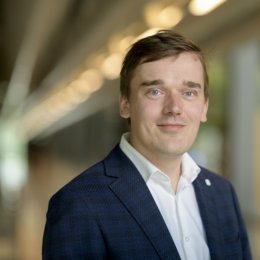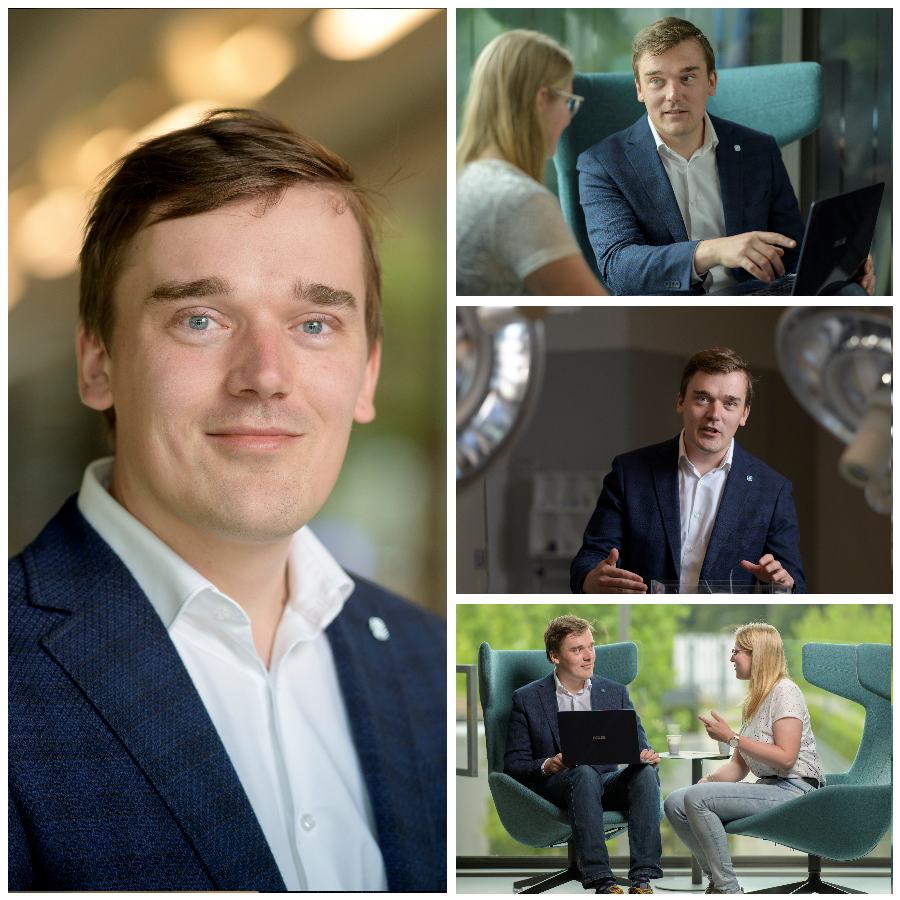Artificial intelligence can save lives
Medical imaging techniques like MRI, CT and ultrasound can be applied much more effectively. Jelmer Wolterink develops artificial intelligence to improve the diagnosis of cardiovascular diseases such as abdominal aortic aneurysms.
Cardiovascular diseases are the number one cause of death in the world. For example, about 2 to 3% of the population develops a dilatation or aneurysm of the abdominal aorta that can rupture, which is often lethal. An aneurysm is often the reason for preventive repair of the aorta. But such a procedure is not without risk and not always necessary. “The radiologist analyzes MRI, CT and/or ultrasound images to detect a widening or narrowing in the artery, so he can determine the appropriate treatment,” Wolterink says. Not all information that could be extracted from these images is actually used; a lot of information is missed. Measuring and analyzing medical images could happen more accurately if we do it automatically instead of with the human eye.”
The use of artificial intelligence can strongly improve the effectiveness of medical imaging. Automation saves time and reduces the pressure on care. Viewing large numbers of images is then done by deep learning and the use of algorithms. Better analysis of images will also provide better diagnoses and thus personalized treatment for the patient.
Better predicting
With a Veni grant, Wolterink is now working on better prediction methods for the aorta. How will the dilatation develop? What is the chance that it will lead to a rupture of the abdominal aorta? The use of artificial intelligence should provide answers to these questions. “Many images are already available from a patient, such as CT scans and ultrasounds taken earlier,” Wolterink explains. “Radiologists analyze how big the dilatation is based on this data. If the aorta is wider than 5.5 centimeters, surgery follows. If it is not, then nothing happens. But in some patients, the aorta may rupture if it is smaller than 5.5 centimeters, which is lethal in most cases. Conversely, patients often receive unnecessary treatment, in about 2% of the cases with a fatal outcome. Together with vascular surgeons, we want to do something about that.”
The full picture
Deep learning helps to extract more information from the images, for example, the length, the volume, and the shape of the aneurysm. The algorithms can provide more information about the flow rate of the blood and the pressure on the vessel wall. Wolterink's research group is developing methods for a quick analysis (within a few seconds) to define how high or low the pressure on the vessel wall is, and thus how high the risk of a rupture of the abdominal artery is. For this, medical images taken for other indications can also be used. “A CT scan of the gallstones can also contain valuable data about the aorta,” he says. “By using all these images, we can save lives.”
Precision Medicine
Wolterink's research is part of a big Precision Medicine program at 4TU, which also includes colleagues from the universities of Delft, Wageningen and Eindhoven and academic hospitals. “We want the right care to be in the right place, also in other disease states such as cancer. Our dream is that in the future patients will no longer receive the one size fits all treatment but personalized care.”
Education
Wolterink supervises Technical Medicine students who do internships at hospitals across the country. “Many hospitals have problems in the field of vascular surgery, orthopedics stomach, intestine and liver, for which artificial intelligence can be a solution. As a result, existing images are much better utilized. Hospitals are eager for our students. It's fun to mentor them. You learn from the questions that come from them. Moreover, it provides good contacts with doctors, from which new forms of cooperation can arise."
Wolterink also teaches the course ‘Deep learning for medical imaging analysis’ within the applied mathematics master track ‘Artificial Intelligence for Health’.
About Jelmer Wolterink
Jelmer Wolterink (1988) studied Artificial Intelligence at Radboud University in Nijmegen and obtained a master’s degree in mathematical sciences and scientific computing at Utrecht University. In 2017 he earned his PhD at Utrecht University (UMCU) on the improved diagnosis of coronary artery calcification with artificial intelligence. Since 2020, he has been an assistant professor in the department of Systems, Analysis and Computational Science (SACS) in the Faculty of Electrical Engineering Mathematics and Computing Science in Twente.
Wolterink received several awards and grants for research in medical image analysis. He was awarded an NWO Veni grant (250,000 euros) for his research on 'Machine learning-based predicition of abdominal aortic aneurysm growth and rupture'. An 80,000 euros grant of the TURBO program allows him to develop artificial intelligence methods for accelerated personalized biomechanical simulations with RadboudUMC. With a grant of 60,000 euros from Pioneers in Health Care, Wolterink is researching the use of artificial intelligence in endoscopy.
Press photos
Click on the image to open the press photo folder. These photos are free to be used for publications (mention Fokke Eenhoorn photographer).
. Fokke Eenhoorn fotografie.


